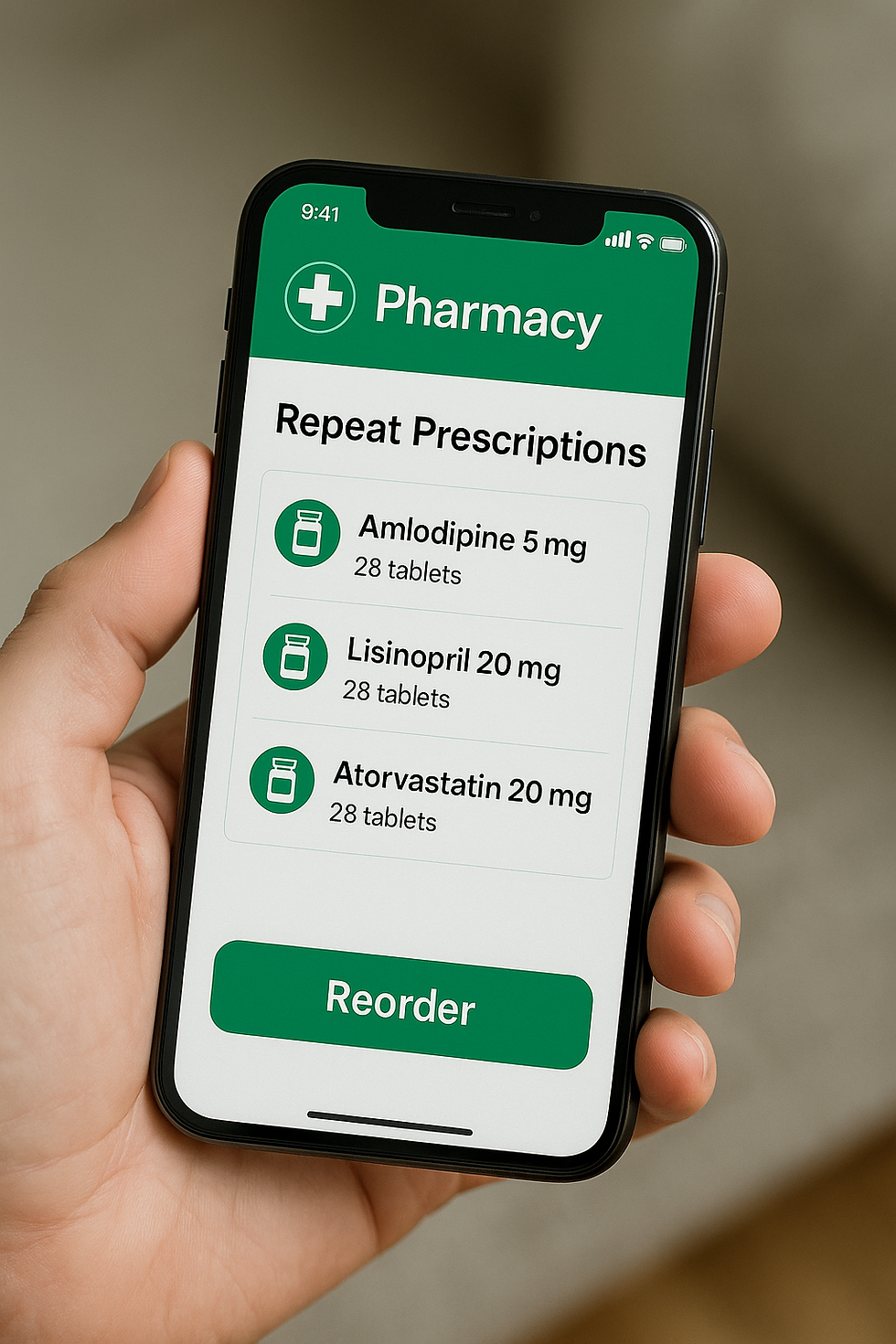Prompt-Built EPRs: Could AI Finally End the Chaos of Custom Configuration?
- Kyle

- May 20
- 3 min read
A radical idea: what if we stopped building EPRs manually and started prompting them instead?
Every NHS Trust has built their electronic patient record (EPR) differently. Even when using the same vendor, the configuration, workflows, clinical documents, and prescribing models often bear little resemblance to each other. The result?
Poor interoperability.
Complex integration.
Endless clinical variation.
And an ever-growing burden on the same small group of digital and clinical informatics staff expected to deliver, maintain, and optimise all of it.
We’ve normalised the chaos. But what if we didn’t have to?

Flipping the Build Model: A Prompt-Driven Future
Imagine an EPR where the core back-end configuration was standardised by the vendor – visible, clean, and compliant with interoperability standards like HL7 v2, FHIR, SNOMED, dm+d. The front end, however, is built not by manual configuration, but by authorised users prompting an AI with what they need.
Instead of system build specialists dragging out forms, searching through legacy templates, and hardcoding ordersets, you simply prompt:
“Create an EPMA item for Co-amoxiclav 625mg TDS using dose-based prescribing.”
“Add a Renal Orderset for acute kidney injury, based on our Trust formulary.”
“Generate pre-, intra-, and post-op documentation bundles for general surgery.”
The system builds itself. Within boundaries. Within standards. And within seconds.
Real-World Use Cases for Prompt-Built EPRs
Let’s ground this in the day-to-day scenarios digital teams know all too well:
🔹 EPMA Build
Prompt: “Build this medication using the Dose-Based convention, map to dm+d X, apply default dose frequency.”
Prompt: “Create 3 Ordersets: Stroke, Sepsis, and Cardiology, using our current formulary and linked protocols.”
🔹 Clinical Documentation
Prompt: “Generate a documentation bundle for ENT day case surgery.”
Prompt: “Review all clinical documents. Highlight those with <5 uses in the past 12 months for review.”
Prompt: “Suggest documentation gaps in acute oncology pathways.”
🔹 Imaging & Pathology Orders
Prompt: “Create a CT Abdomen order linked to LIMS code CTAB23. Include rationale, priority, and contrast options.”
And all of this feeds the underlying configuration engine that is uniform, testable, and integrated – not a patchwork of one-off local builds.
Why This Would Change Everything
Speed: Build in hours, not months. Optimise without burnout.
Consistency: Standardised configuration means fewer errors and better integration.
Usability: Clinically led prompts replace technical dependency.
Analytics & Safety: Uniform metadata and structure enable better decision support, reporting, and assurance.
Even better – this model could allow national-level clinical content development to be shared and reused across Trusts with a few local prompts, rather than duplicating effort hundreds of times.
The Challenges We’d Need to Solve
Of course, this kind of transformation isn’t without its hurdles:
Vendor willingness to expose and maintain a uniform configuration layer.
AI safety assurance, including testing and validation of auto-generated builds.
Prompt design governance – who is authorised to prompt what, and how is it monitored?
Clinical engagement – shifting the culture from custom builds to intelligent standards.
But these are solvable problems. What we lack right now isn’t the technology – it’s the vision.
Final Thoughts: It’s Time to Rethink the Build
We’ve made EPR build harder than it needs to be. We’ve let variation, duplication, and configuration fatigue become the norm. But it doesn’t have to be this way.
Prompt-based configuration could fundamentally reshape how we deliver digital systems in healthcare – faster, safer, smarter. It would free up clinical digital leaders to focus on strategy and quality, not spreadsheets and governance forms.
The future isn’t a thousand Trusts building the same thing in a thousand different ways. The future is standardised systems, built by prompts, optimised by evidence, and scaled effortlessly.
Let’s not wait ten more years for this to happen.




I agree with this, would ultimately save time for clinicians not having to learn new systems across trusts and benefit the patient with more consistent care throughout NHS providers i.e. not having to print notes as the systems would integrate and work in the same way resulting in quicker care, reliable and efficient. Win win for all. It's working smarter not harder and the tools are out there...